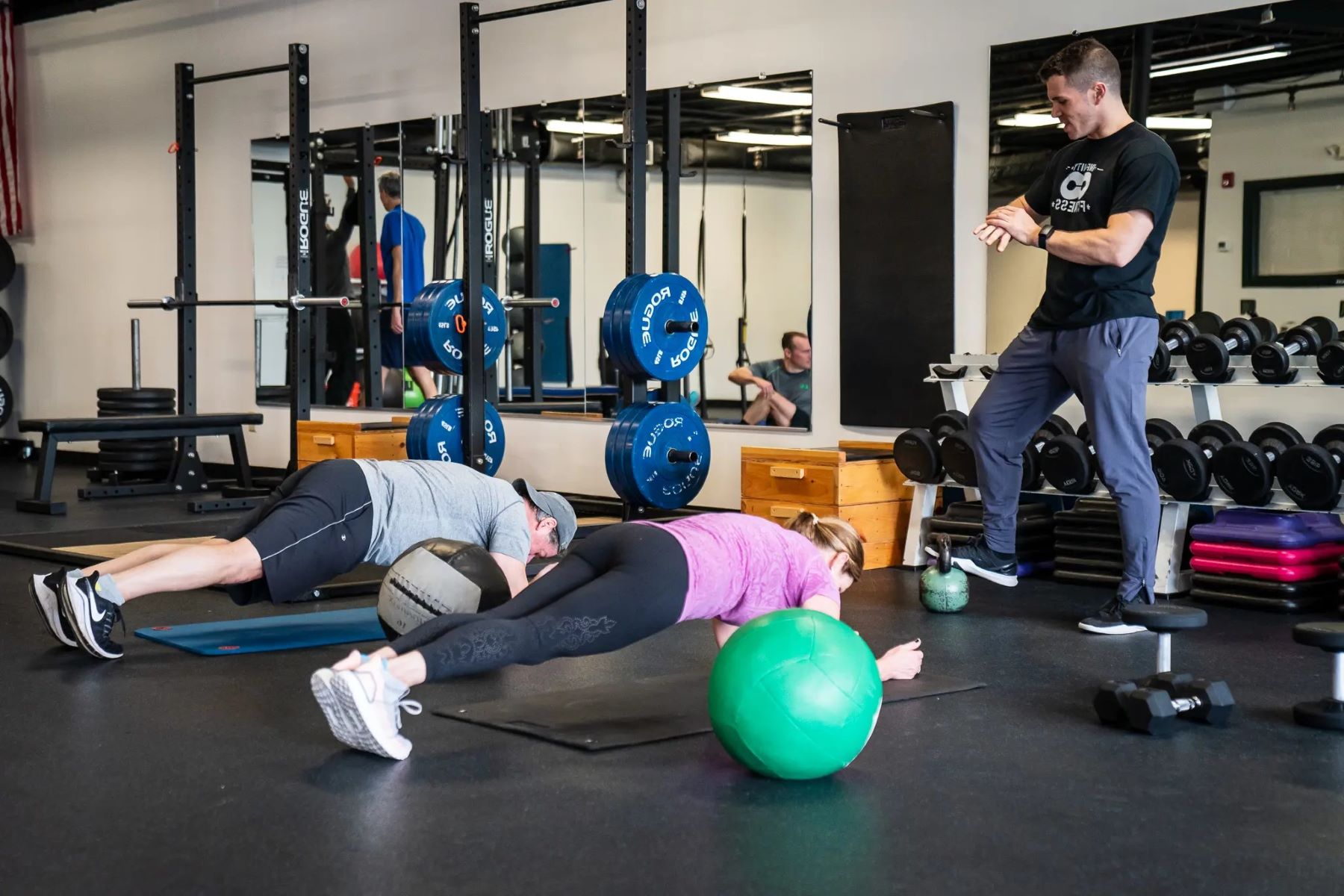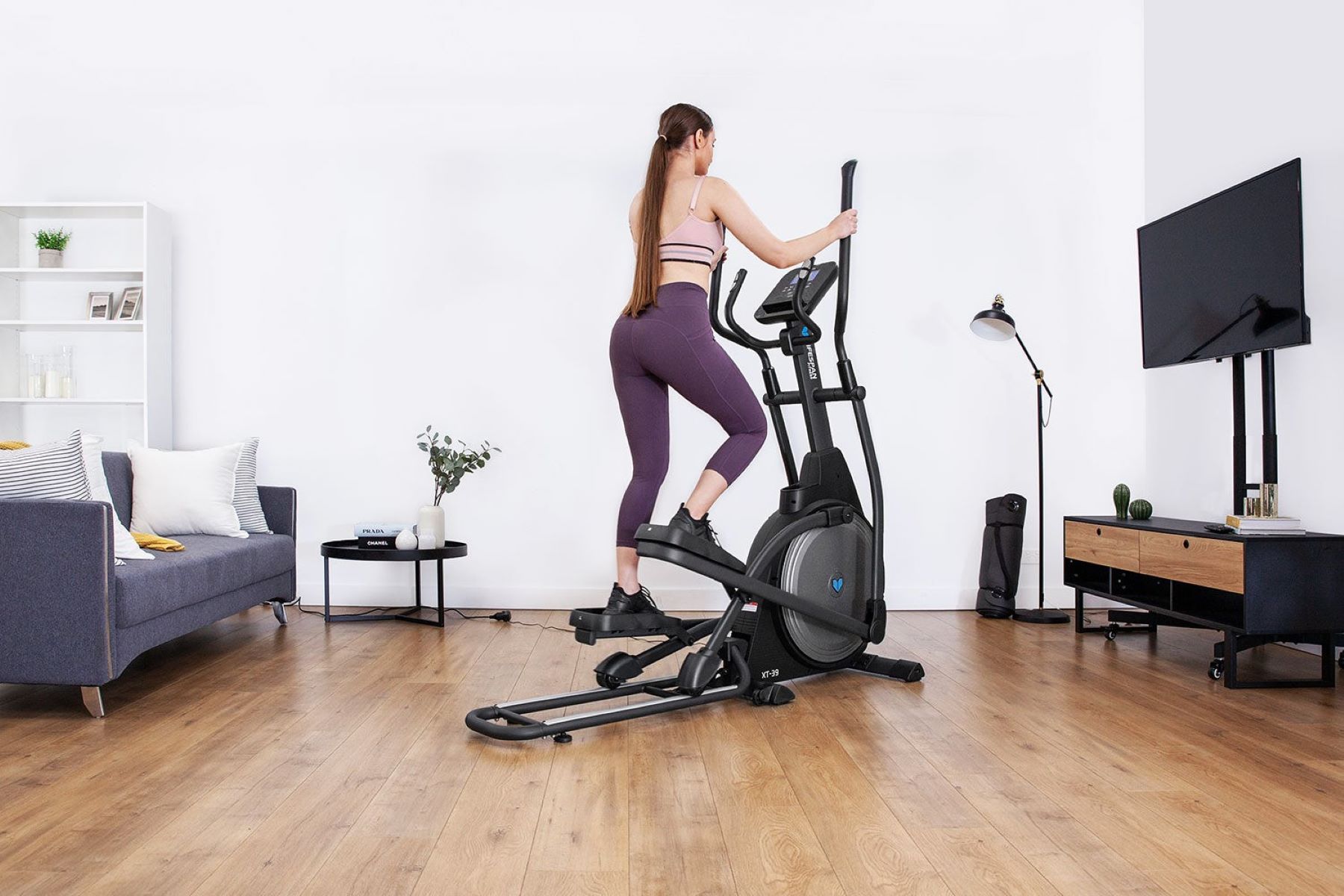Home>Training & Techniques>Time-saving Training Sessions For Busy Runners


Training & Techniques
Time-saving Training Sessions For Busy Runners
Published: March 4, 2024
Discover time-saving training sessions and techniques for busy runners. Maximize your workouts and achieve your running goals efficiently.
(Many of the links in this article redirect to a specific reviewed product. Your purchase of these products through affiliate links helps to generate commission for Therunningadvisor.com, at no extra cost. Learn more)
Table of Contents
- Benefits of time-saving training sessions
- Incorporating interval training into your routine
- Utilizing high-intensity interval training (HIIT) for maximum efficiency
- Making the most of short, focused workouts
- Balancing time-saving sessions with longer runs
- Tips for staying motivated and consistent with time-saving training
Benefits of time-saving training sessions
Time-saving training sessions offer a multitude of advantages for individuals with busy schedules. These efficient workouts not only accommodate hectic lifestyles but also provide numerous benefits that can enhance overall fitness and well-being. Here are some key advantages of incorporating time-saving training sessions into your fitness routine:
-
Efficiency: Time-saving training sessions are designed to maximize the effectiveness of workouts within a limited timeframe. By focusing on high-impact exercises and strategic training techniques, individuals can achieve significant results in a shorter duration.
-
Flexibility: With time-saving workouts, individuals have the flexibility to fit exercise into their busy schedules without feeling overwhelmed. Whether it's a quick morning session before work or a brief workout during a lunch break, these sessions can be seamlessly integrated into daily routines.
-
Increased Motivation: The ability to complete a full workout in a shorter time frame can boost motivation and adherence to a fitness regimen. Knowing that a comprehensive training session can be accomplished within a limited window can inspire individuals to stay consistent with their workouts.
-
Optimized Results: Despite the shorter duration, time-saving training sessions can deliver impressive results. By incorporating targeted exercises and efficient training methods, individuals can improve cardiovascular fitness, build strength, and enhance overall endurance.
-
Time Management: Engaging in time-saving workouts encourages individuals to prioritize their health and fitness, promoting better time management skills. This can lead to improved productivity and a more balanced approach to daily responsibilities.
-
Variety and Adaptability: Time-saving training sessions can encompass a wide range of exercises, from high-intensity interval training (HIIT) to circuit workouts and bodyweight exercises. This variety allows individuals to tailor their workouts to their specific fitness goals and preferences.
Incorporating time-saving training sessions into a fitness routine can yield remarkable benefits, making it an ideal choice for individuals seeking to maintain an active lifestyle despite time constraints.
Read more: Quick Yoga Poses For Busy Runners
Incorporating interval training into your routine
Interval training, a form of cardiovascular exercise that alternates between high-intensity bursts and low-intensity recovery periods, is a highly effective method for enhancing fitness levels and optimizing workout efficiency. By incorporating interval training into your routine, you can experience a wide array of benefits that contribute to overall health and well-being.
One of the primary advantages of interval training is its ability to elevate cardiovascular fitness. The alternating periods of intense exertion and active recovery challenge the heart and lungs, leading to improved aerobic capacity and enhanced endurance. This can be particularly beneficial for runners, as it simulates the varying intensities experienced during outdoor runs, ultimately enhancing their ability to sustain higher speeds and cover longer distances.
Moreover, interval training is renowned for its capacity to accelerate calorie burning and promote weight management. The high-intensity intervals elevate the body's metabolic rate, leading to continued calorie expenditure even after the workout is completed. This phenomenon, known as excess post-exercise oxygen consumption (EPOC), can contribute to greater fat loss and improved body composition over time.
In addition to its physical benefits, interval training offers a refreshing change of pace from traditional steady-state cardio workouts. The dynamic nature of interval training keeps workouts engaging and mentally stimulating, preventing monotony and boredom often associated with repetitive exercise routines. This can be particularly advantageous for individuals with busy schedules, as it injects excitement and variety into their fitness regimen.
When incorporating interval training into your routine, it's essential to customize the intensity and duration of intervals based on your fitness level and goals. Beginners may start with shorter high-intensity bursts followed by longer recovery periods, gradually progressing to more challenging intervals as their fitness improves. Conversely, experienced athletes can incorporate advanced interval protocols to further enhance their performance and push their limits.
Furthermore, interval training can be seamlessly integrated into various forms of exercise, including running, cycling, swimming, and bodyweight workouts. This versatility allows individuals to tailor interval training to their preferred activities, making it a versatile and adaptable training method suitable for diverse fitness preferences.
By embracing interval training as a fundamental component of your fitness routine, you can unlock its potential to elevate cardiovascular fitness, boost calorie burning, and infuse your workouts with invigorating variety. Whether you're a seasoned athlete or a fitness enthusiast seeking to maximize workout efficiency, interval training offers a compelling approach to achieving your fitness aspirations.
Utilizing high-intensity interval training (HIIT) for maximum efficiency
High-intensity interval training (HIIT) has emerged as a popular and highly effective approach to fitness, renowned for its ability to deliver remarkable results in a condensed timeframe. This training method involves alternating between short bursts of intense exercise and brief recovery periods, challenging the body to its limits and yielding substantial benefits for cardiovascular health, endurance, and overall fitness.
One of the defining features of HIIT is its unparalleled efficiency. By engaging in short yet intense intervals of exercise, individuals can achieve significant physiological adaptations that contribute to improved performance and fitness. The intense bursts of activity push the body to operate at near-maximum capacity, eliciting adaptations in cardiovascular function, muscular endurance, and metabolic efficiency. This results in enhanced aerobic and anaerobic capacity, allowing individuals to push their limits and achieve higher levels of fitness in a fraction of the time required for traditional steady-state cardio workouts.
Moreover, the metabolic impact of HIIT extends beyond the duration of the workout, making it a potent tool for calorie burning and fat loss. The intense intervals elevate the body's metabolic rate, leading to a prolonged period of elevated calorie expenditure post-exercise. This phenomenon, known as excess post-exercise oxygen consumption (EPOC), can contribute to greater fat oxidation and energy expenditure, making HIIT an effective strategy for weight management and body composition improvement.
In addition to its physiological benefits, HIIT offers a diverse range of workout options, catering to individuals with varying fitness levels and preferences. Whether it's sprint intervals, cycling sprints, or bodyweight HIIT circuits, the versatility of HIIT allows individuals to customize their workouts to align with their specific goals and interests. This adaptability not only enhances the overall workout experience but also promotes long-term adherence and consistency, crucial factors in achieving sustainable fitness progress.
Furthermore, the time-saving nature of HIIT makes it an ideal choice for individuals with busy schedules. By condensing a comprehensive workout into a short timeframe, HIIT enables individuals to prioritize their fitness without compromising their other responsibilities. This accessibility and convenience make HIIT a practical and sustainable approach to maintaining an active lifestyle, catering to the needs of modern-day individuals seeking efficient and effective fitness solutions.
In essence, the utilization of high-intensity interval training (HIIT) represents a potent strategy for maximizing workout efficiency, achieving substantial fitness gains, and optimizing overall health. By harnessing the power of intense intervals and strategic recovery periods, individuals can elevate their fitness levels, enhance metabolic function, and unlock the transformative potential of this dynamic training method.
Making the most of short, focused workouts
Short, focused workouts have gained widespread popularity for their ability to deliver significant fitness benefits within a limited timeframe. These efficient training sessions are designed to maximize the effectiveness of exercises, making every minute count towards achieving fitness goals. By adopting a strategic approach and leveraging the principles of high-intensity training, individuals can make the most of short, focused workouts and experience remarkable improvements in strength, endurance, and overall fitness.
One of the key strategies for optimizing short, focused workouts is to prioritize compound exercises that engage multiple muscle groups simultaneously. Compound movements such as squats, deadlifts, lunges, and push-ups not only maximize calorie expenditure but also promote functional strength and muscular development. By incorporating these multi-joint exercises into short workouts, individuals can efficiently target a wide range of muscle groups, leading to comprehensive strength gains and improved overall conditioning.
Furthermore, integrating interval training techniques into short, focused workouts can amplify their effectiveness. By alternating between periods of high-intensity effort and brief recovery intervals, individuals can elevate their heart rate, boost metabolic function, and enhance cardiovascular endurance. This approach not only maximizes calorie burning during the workout but also stimulates post-exercise oxygen consumption, leading to continued energy expenditure and fat oxidation long after the workout is completed.
In addition to incorporating compound exercises and interval training, individuals can enhance the efficiency of short workouts by embracing functional movements that mimic real-life activities. Functional exercises such as kettlebell swings, battle ropes, and medicine ball slams not only improve strength and coordination but also enhance overall athleticism and movement proficiency. By integrating these dynamic movements into short, focused workouts, individuals can cultivate functional fitness that translates into improved performance in daily activities and recreational pursuits.
Moreover, leveraging bodyweight exercises can further optimize the effectiveness of short workouts, eliminating the need for extensive equipment and enabling individuals to engage in challenging workouts virtually anywhere. Bodyweight exercises such as burpees, mountain climbers, and planks offer a diverse array of movement patterns and intensity levels, allowing individuals to customize their workouts based on their fitness level and goals. This versatility makes bodyweight exercises an invaluable component of short, focused workouts, catering to individuals seeking efficient and accessible training solutions.
By strategically incorporating compound exercises, interval training, functional movements, and bodyweight exercises into short, focused workouts, individuals can maximize the effectiveness of their training sessions and achieve substantial fitness gains. This approach not only optimizes workout efficiency but also fosters a time-conscious and results-driven mindset, empowering individuals to prioritize their health and fitness amidst their busy schedules.
Balancing time-saving sessions with longer runs
Achieving a harmonious balance between time-saving training sessions and longer runs is essential for optimizing overall fitness and performance. While time-saving sessions offer efficiency and convenience, longer runs play a pivotal role in building endurance, mental resilience, and aerobic capacity. By integrating both approaches into a well-rounded training regimen, individuals can experience comprehensive fitness improvements and unlock their full athletic potential.
Time-saving sessions, characterized by their condensed duration and high-intensity focus, are instrumental in promoting cardiovascular fitness, muscular strength, and metabolic efficiency. These sessions are designed to deliver maximum impact within a limited timeframe, making them ideal for individuals with busy schedules. By incorporating targeted exercises, interval training, and functional movements, time-saving sessions enable individuals to achieve significant fitness gains while accommodating their time constraints.
On the other hand, longer runs are indispensable for developing endurance, mental fortitude, and sustained aerobic performance. Endurance runs challenge the body to adapt to prolonged exertion, enhancing the cardiovascular system, improving muscular endurance, and cultivating the mental resilience necessary for enduring physical challenges. Additionally, longer runs provide an opportunity for individuals to explore and appreciate the meditative and introspective aspects of running, fostering a deeper connection with the activity and promoting mental well-being.
Balancing time-saving sessions with longer runs involves strategic planning and periodization to ensure that both training modalities complement each other effectively. By incorporating time-saving sessions for targeted strength and interval training, individuals can enhance their overall fitness and performance while preserving energy for longer runs. This approach allows individuals to capitalize on the efficiency of time-saving sessions while reserving adequate time and energy for the demands of endurance running.
Furthermore, integrating longer runs into a training regimen offers a holistic approach to fitness, addressing the physical, mental, and emotional aspects of running. Endurance runs provide an opportunity for individuals to build mental resilience, practice pacing strategies, and cultivate a deep sense of accomplishment as they conquer longer distances. Moreover, longer runs contribute to the development of aerobic capacity, enabling individuals to sustain higher intensities during time-saving sessions and other high-intensity workouts.
By striking a balance between time-saving sessions and longer runs, individuals can harness the benefits of both training modalities, optimizing their fitness, and performance. This balanced approach not only fosters well-rounded athleticism but also promotes a sustainable and enjoyable running experience, catering to the diverse needs and aspirations of individuals seeking to maximize their running potential.
Tips for staying motivated and consistent with time-saving training
Staying motivated and consistent with time-saving training is essential for achieving long-term fitness goals and reaping the full benefits of efficient workouts. Here are some valuable tips to help individuals maintain motivation and consistency in their time-saving training endeavors:
-
Set Clear and Realistic Goals: Establishing specific and achievable fitness goals provides a sense of purpose and direction. Whether it's improving running speed, increasing endurance, or enhancing overall strength, clear objectives serve as powerful motivators and guideposts for progress.
-
Create a Structured Workout Schedule: Planning and scheduling time-saving training sessions in advance helps individuals prioritize their fitness commitments. By treating workouts as non-negotiable appointments, individuals can cultivate a disciplined approach to training and ensure consistent participation.
-
Find Accountability Partners: Connecting with like-minded individuals or joining fitness communities can foster a sense of accountability and support. Sharing workout experiences, progress, and challenges with others can provide encouragement and motivation, making it easier to stay consistent with training.
-
Embrace Variety in Workouts: Incorporating diverse exercises and training modalities prevents monotony and keeps workouts engaging. By exploring different forms of time-saving sessions, such as HIIT, circuit training, and bodyweight workouts, individuals can infuse excitement and variety into their fitness routine.
-
Track Progress and Celebrate Achievements: Monitoring fitness improvements, such as increased running distances, faster workout completion times, or enhanced strength levels, serves as a source of motivation. Celebrating milestones and progress reinforces the positive impact of time-saving training, inspiring individuals to stay consistent with their workouts.
-
Prioritize Recovery and Rest: Recognizing the importance of rest and recovery is crucial for sustaining motivation and preventing burnout. Incorporating rest days and prioritizing adequate sleep and nutrition supports overall well-being, ensuring individuals remain energized and motivated for their time-saving training sessions.
-
Visualize Success and Positive Outcomes: Engaging in visualization techniques, such as imagining successful workouts, achieving fitness milestones, and embracing a healthier lifestyle, can bolster motivation. Visualization fosters a positive mindset and reinforces the belief in the attainability of fitness goals.
-
Seek Professional Guidance and Support: Consulting with fitness professionals, trainers, or coaches can provide valuable guidance and personalized training plans. Professional support not only enhances the effectiveness of time-saving training but also instills confidence and motivation in individuals pursuing their fitness journey.
By implementing these tips, individuals can cultivate a resilient and motivated mindset, ensuring consistent engagement with time-saving training and reaping the numerous benefits of efficient workouts.















